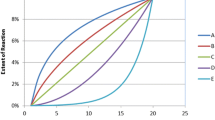Abstract
The Accelerated Stability Assessment Program (ASAP) was applied for the first time to a peptide, the antibiotic active pharmaceutical ingredient bacitracin. Bacitracin and its complex with zinc were exposed to temperature and relative humidity conditions from 50 to 80°C and from 0 to 63% for up to 21 days. High-performance liquid chromatography was used to analyze the stressed samples for both degradant formation and loss of the active (bacitracin A) and two inactive isoforms, with identities confirmed by mass spectrometry. These data were then analyzed using a humidity-corrected Arrhenius equation and isoconversion approach to create a shelf-life predicting model for typical storage conditions. Model fitting was found to be good with low residuals in both temperature and relative humidity axes for all parameters examined. The generated model’s predictions for both the native and zinc complex of bacitracin for both formation of the major degradation product (F) and loss of the active isoform (A) were consistent with longer-term measured values at 30°C/53%RH and 40°C/75%RH, validating this approach for accelerating the determination of long-term stability of a peptide.





Similar content being viewed by others
References
International Conference on Harmonization Guideline Q1A(R2): stability testing of new drug substances and drug Products 2003.
Waterman KC, Adami RC. Accelerated aging: prediction of chemical stability of pharmaceuticals. Int J Pharm. 2005;293:101–25.
Waterman KC. The application of the Accelerated Stability Assessment Program (ASAP) to quality by design (QbD) for drug product stability. AAPS PharmSciTech. 2011;12:932–7.
Waterman KC, MacDonald BC. Package selection for moisture protection for solid, oral drug products. J Pharm Sci. 2010;99:4437–52.
Waterman KC. 2009.Understanding and predicting pharmaceutical product shelf-life. In Huynh-Ba K, editor. Handbook of Stability Testing in Pharmaceutical Development, Springer, p 115–135.
Waterman KC, Colgan ST. A science-based approach to setting expiry dating for solid drug products. Regul Rapp. 2008;5(7):9–14.
Waterman KC, Carella AJ, Gumkowski MJ, Lukulay P, MacDonald BC, Roy MC, et al. Improved protocol and data analysis for accelerated shelf-life estimation of solid dosage forms. Pharm Res. 2007;24(4):780–90.
Cleland JL, Powell MF, Shire SJ. The development of stable protein formulations: a close look at protein aggregation, deamidation, and oxidation. Crit Rev Ther Drug Carrier Syst. 1993;10(4):307–77.
Yoshioka S, Aso Y, Izutsu K, Terao T. Application of accelerated testing to shelf-life prediction of commercial protein preparations. J Pharm Sci. 1993;83(3):454–6.
Yoshioka S, Aso Y, Izutsu K, Kojima S. Is stability prediction possible for protein drugs? Denaturation kinetics of β-galactosidase in solution. Pharm Res. 1994;11(12):1721–5.
Franks F. Accelerated stability testing of bioproducts: attractions and pitfalls. Trends Biotechnol. 1994;12:114–7.
Jaenicke R. Stability and folding of domain proteins. Prog Biophys Mol Biol. 1999;71:155–241.
Shnyrov VL, Zhadan GG. Irreversible thermal denaturation of complex biological structures. 2000;4:351–67.
Reithmeier H, Dickes M, Winer G, Knoll AG. Accelerated isothermal and non-isothermal stability studies of aqueous protein formulations. Proc Int Symp Control Rel Bioact Mater. 2001;28:896–7.
Roberts CJ. Kinetics of irreversible protein aggregation: analysis of extended Lumry-Eyring models and implications for predicting protein shelf life. J Phys Chem B. 2003;107:1194–207.
Weiss WF, Young TM, Roberts CJ. Principles, approaches, and challenges for predicting protein aggregation rates and shelf life. J Pharm Sci. 2009;98:1246–77.
Sanchez-Ruiz JM. Protein kinetic stability. Biophys Chem. 2010;148:1–15.
Ikai Y, Oka H, Hayakawa J, Matsumoto M, Saito M, Harada K-I, et al. Total structures and antimicrobial activity of bacitracin minor components. J Antibiot (Tokyo). 1995;48:233–42.
United States Pharmacopeia. 2008. Bacitracin Monograph. In USP 31-NF, p 1483–1485.
Stone KJ, Strominger JL. Mechanism of action of bacitracin: complexation with metal ion and C55-isoprenyl pyrophosphate. Proc Natl Acad Sci U S A. 1971;68:3223–7.
Zhao W, Qiao J, Song Q, Lian H. Characterization of bacitracin zinc by matrix-assisted laser desorption ionization–tandem time-of-flight mass spectrometry. Instrum Sci Technol. 2015;43:453–68.
Pavli V, Kmetec V. Pathways of chemical degradation of polypeptide antibiotic bacitracin. Biol Pharm Bull. 2006;29:2160–7.
Potts AR, Psurek T, Jones C, Parris L, Wise A. Validation of a quantitative HPLC method for bacitracin and bacitracin zinc using EDTA as a mobile-phase modifier. J Pharm Biomed Anal. 2012;70:619–23.
Consonni V, Ballabio D, Todeschini R. Comments on the definition of the Q2 parameter for QSAR validation. J Chem Inf Model. 2009;49:1669–78.
Consonni V, Ballabio D, Todeschini R. Evaluation of model predictive ability by external validation techniques. J Chemometrics. 2010;24:194–201.
Acknowledgments
The authors would like to acknowledge the following scientists from FreeThink Technologies, who helped considerably on this project: Alisa Waterman, Philip Waterman, Tom Sharp, Michael Grabowski, Nick Sinchuk, and Teslin Botoy.
Author information
Authors and Affiliations
Corresponding author
Rights and permissions
About this article
Cite this article
Waterman, R., Lewis, J. & Waterman, K.C. Accelerated Stability Modeling for Peptides: a Case Study with Bacitracin. AAPS PharmSciTech 18, 1692–1698 (2017). https://doi.org/10.1208/s12249-016-0635-7
Received:
Accepted:
Published:
Issue Date:
DOI: https://doi.org/10.1208/s12249-016-0635-7




